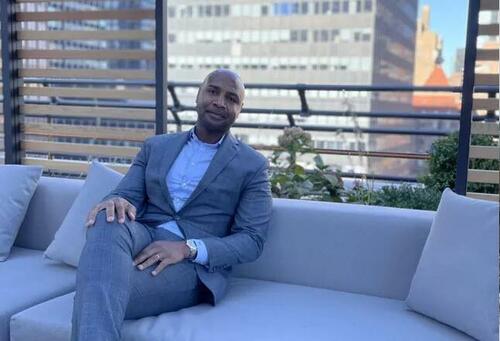“Feels Like The New Retail”: Some Owners Giving Up On Older Offices In High-Cost Cities
By Tim Carroll of Bisnow News
After two years of pandemic uncertainty, many questions around the return to office and its impact on commercial real estate have yet to be answered. But as migration patterns from high-cost markets to the Sun Belt have entrenched alongside attitudes around remote work, familiar, ominous music is playing for owners of older office buildings in Chicago and New York City.
In the last two weeks, owners of Class-B office properties in both cities have handed the keys to their buildings over to their lenders, much as owners of Class-B malls have elected to do in recent years.
“Office in what you’ll call the northern, the colder climates, the high-tax [cities] — that feels like the new retail, right?” Origin Investments co-CEO Michael Episcope told Bisnow. “Where retail was 15 years ago and its slow demise.”

Within a year of the pandemic’s U.S. arrival, Simon Property Group, the country’s largest mall owner, relinquished four malls to lenders. It followed that up by handing back the keys to an Atlanta-area mall in February 2021, about a month after Brookfield gave the deed on the 1.3M SF North Point Mall outside of Atlanta to its lender.
About a year later, big-name borrowers are doing the same with their office properties in two of the three biggest U.S. office markets.
In Chicago, a lender reportedly took control of the 1.4M SF 175 West Jackson Blvd. building where Brookfield had fallen into delinquency on a $258M loan, according to Trepp, which maintains a database of securitized mortgages. Just a day later, Trepp reported that the special servicer on a $100M loan backed by 135 South LaSalle St. said the most likely resolution for the loan was the owner handing over the deed in lieu of foreclosure.
The distress moved east from there, with Blackstone handing back the keys to 1740 Broadway, a 621K SF, 26-story office tower with a $308M CMBS loan. Most recently, UK-based investment firm Epic turned over ownership of the 24-story office property at 220 West 42nd St. it acquired in 2012 in a deed-in-lieu of foreclosure transaction.
In general, office buildings in Chicago, New York and other traditional gateway cities have been less busy than those in Sun Belt markets like the Texas Triangle of Dallas, Houston and Austin, according to Kastle Systems’ Back To Work Barometer.
While those figures could be interpreted as reflective of the local politics of public health, they align with U.S. population shifts: higher-cost markets like New York, Los Angeles, Chicago and San Francisco lost a combined 700,000 residents between July 2020 and July 2021, according to the U.S. Census Bureau. By contrast, Houston, Dallas, Phoenix, Atlanta and Austin gained a combined 300,000 residents.
“You can’t copy the Sun Belt’s weather, right?” DBRS Morningstar Head of CMBS Research Steve Jellinek said.
The Windy City’s office market is a microcosm of the concerns around cold-weather, higher-cost office markets that lost population during the pandemic. Nearly 11% of its $8.28B office CMBS balance was in special servicing in February, according to data Jellinek analyzed, compared to the national average of 3.1% in February, according to Trepp.
As additional loans mature on office properties, lenders are getting more cautious along geographic lines.

“You have more conservative underwriting, from what we’ve seen, in some of those cities that are taking a little bit longer to come back,” said JLL Senior Managing Director Sean Ryan, who sources and executes loan, distressed debt and real estate-owned portfolio sales.
“You’re going to see continued investment, but there’s going to be a higher cost of capital looking at those deals, unless it’s truly a newly stabilized, Class-A product with phenomenal loan service in place,” Ryan said.
Confidence in the office market is following the population, and with some of the biggest office-using sectors decentralizing because their talent is moving, developers are looking west and south.
“What’s certainly been driving the Sun Belt markets for investment have been people and the talent, and the companies have been following,” said Nuveen Managing Director Nadir Settles, adding that gateway cities’ reopening have begun to mitigate the migration trends.
New York and Chicago are at a unique disadvantage — combined, the two markets have more than 720M SF of office inventory, according to JLL, much of which is decades old and at risk of obsolescence with modern tenant demands.
“There’s just a tremendous amount of space that’s coming online that’s truly — people would call it second-gen space, but it’s older than that,” Ryan said. “A bank has been in that building for 15, 20 years, and even if it was redone five, seven years ago, to try to re-lease it at a quality rate today is going to cost you significant capital.”
“I don’t see anybody coming from their home and going to a Class-B building just because of price anymore,” Settles said.
Office leasing demand had its sharpest dip in February since the beginning of the pandemic, according to CBRE’s U.S. Leasing Index. Even in office markets that have recovered relatively well, companies aren’t taking huge chunks of space off the market.
“There’s companies that are looking for space, but they’re not looking for 400K SF of space,” Ryan said of Houston. “They’re looking for 25K SF, maybe 50K SF. That’s a tough ask, to fill a 400K SF building or larger with 25K SF leases.”
As the pandemic recedes, Episcope said he expects the office market to get a natural lift. Coronavirus cases were down 12% over the two weeks prior to Monday, and Covid-19 hospitalizations were down 36% over those last 14 days, according to New York Times data.
But even as Americans get more comfortable or more mandated to return to offices, landlords in cities facing cost-of-living and inventory disadvantages are going to have to compete that much harder for tenants.
“I can no longer just buy office and expect just natural lift because I’m in that area,” said Settles, who oversees Nuveen’s New York office investments. “I have to be able to buy it and execute the business plan where I can put the right amenities, I can put the right ESG factors to future-proof that office building and make it more attractive.”

Nuveen’s 730 Third Ave. in the Midtown East area of Manhattan pulls out all the stops in the so-called amenities arms race. In addition to the 6K SF sky lounge, 8K SF fitness center and 9K SF for rotating food vendors the renovated 27-story tower boasts, Settles said the Gensler-designed, LEED Gold-certified building has a golf simulator, providing all the amenities an employee may need throughout a day.
Part of Settles’ optimism for New York stems from the same logic of CRE following residential: New York City rents have reached all-time highs. Indeed, tenant demand for office has responded similarly, with a record number of leases for at least $100 per SF signed in Manhattan in 2021.
“I think there’s definitely still opportunity in cities,” Settles said. “You just have to be cautious and you have to be able to effectuate the business plan where tenants are attracted, and that is having assets in transit-rich-oriented neighborhoods, that will offer work-live-play.”
He pointed to Related Cos.’ Hudson Yards and L&L Holding Co.’s 425 Park Ave. as examples of the sustainability-forward, amenity-rich properties that are attracting modern tenants.
“The tenant of tomorrow, the ones who are out there looking for office space, it’s not just about price,” Episcope said. “It’s about location, building amenities … It’s just more important for these buildings to have all the bells and whistles, and those who don’t, [who] are just kind of trying to sell space into a market and have more urban location are going to be losing out, and we’ve seen that in Chicago, too.”
Experts aren’t ready to declare New York, Chicago, LA and other large metro office markets dead. Instead, they see opportunity. For example, the lender that was handed the keys to Epic’s building on 42nd Street was Yellowstone Real Estate Capital, PincusCo reported. It acquired the note on the property from M&T Bank in November.
“The really savvy investors who have the time and the expertise are going to continue to lend in the office space because I think there’s an ability to get paid maybe a slight premium today in that market,” Ryan said. “So office offers that opportunity, retail offers that opportunity, some others. There’s a little more price differentiation from those two assets, which I think is where people are going to start moving to, migrating to and figuring out.”
Tyler Durden
Mon, 04/04/2022 – 17:00
via ZeroHedge News https://ift.tt/LE4cPnY Tyler Durden